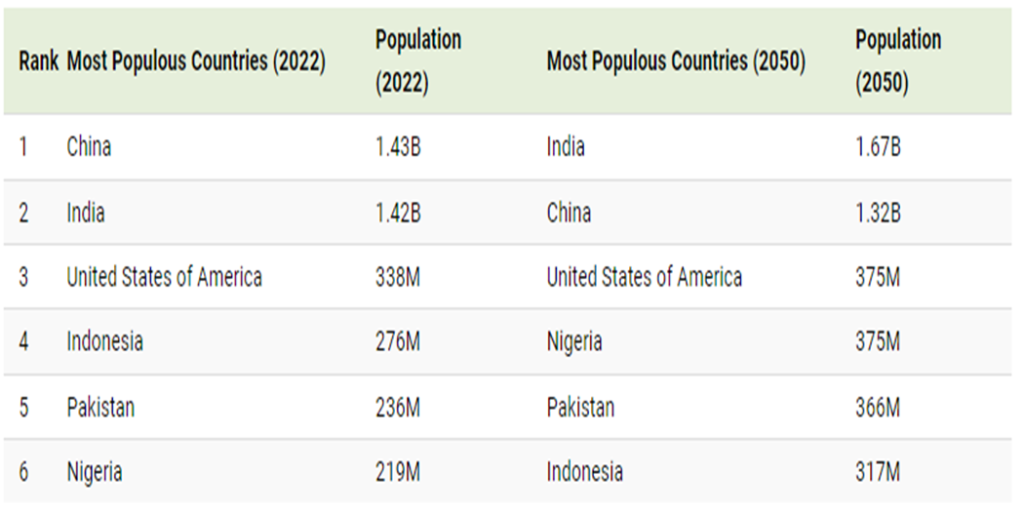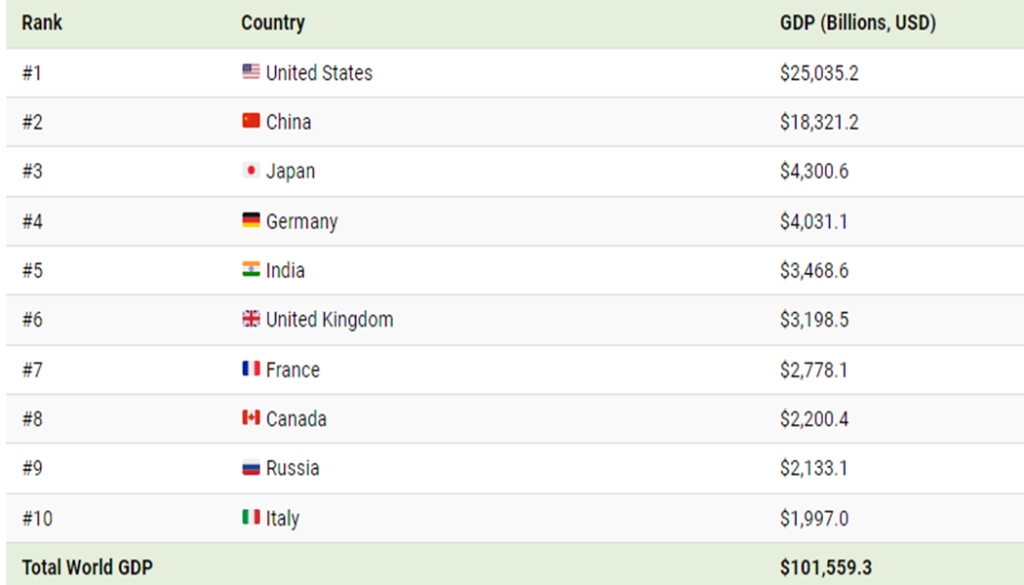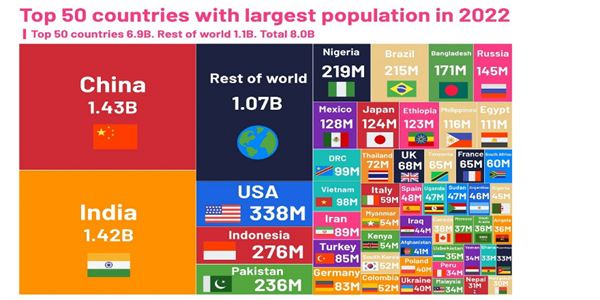
Visualizing the Changing World Population, by Country
On average, there are 250 babies born every minute around the world. This adds up to over 130 million new human beings entering the world every year.
Then it’s no surprise that the world’s population, which now stands at a whopping 8 billion, has more than tripled since the mid-20th century.
Let’s take a closer look at some of these population trends.
Most Populous Countries: 2022 vs. 2050
The Asian countries of India and China have topped the rankings of the world’s most populous countries for hundreds of years.
China currently holds the number one spot on this list. But the population of India is expected to surpass that of China’s by later this year, eventually reaching a total of 1.67 billion in 2050.

The United States, Nigeria, Pakistan, and Indonesia are the next most populous countries in 2022, and they are expected to hold onto these spots until 2050. However, they have a long way to go before catching up with the top two, as their combined population doesn’t add up to half that of India and China’s total.


Several countries in the world are expected to see their populations decline over the next 30 years. And the main reason for this: extremely low birth rates.
South Korea, which has the world’s lowest fertility rate, is expected to see a sharp decline of almost 12% in its population as it falls to 46 million by 2050.
Changing world population trends like this can pose challenges for economies around the world, such as labor shortages, aging populations, and an increasing financial burden on younger generations.
The Population of India’s States Compared with Countries
In a world with eight billion people, even the numbers of the largest population centers like China and India can start to lose their impact.
The visualization above looks to give people a different frame of reference to think about the country’s massive population figures.

The Population Breakdown
Similar to other big countries, the gap between India’s largest and smallest states is quite wide.
Uttar Pradesh is the most populous country subdivision in the world at 232 million people, while Sikkim, in the northeast of the country, is the least populated state in India (0.7 million).
Here are India’s 20 states compared to other countries and territories with comparable sizes:
Hypothetically, if India’s states were to all became countries today, they would take up half the spots in a ranking of the world’s top twenty most populous countries.


A number of Indian states match up evenly against some very large countries, including Maharashtra (Japan), West Bengal (Egypt), and Tamil Nadu (Germany). Of course, the largest is Uttar Pradesh (Brazil+Chile), which also happens to measure up to neighboring Pakistan.
For people living in countries such as Canada or Australia, it may be humbling to know that these countries are equal to a smallish Indian state.
Countries by Share of the Global Economy
By the end of 2022 we can recap many historic milestones of the year, like the Earth’s population hitting 8 billion and the global economy surpassing $100 trillion.
In this chart, data is visualized with world’s GDP using data from the International Monetary Fund (IMF), showcasing the biggest economies and the share of global economic activity that they make up.

Gross Domestic Product (GDP) is a broad indicator of economic activity within a country. It measures the total value of economic output—goods and services—produced within a given time frame by both the private and public sectors.
The GDP Heavyweights
The global economy can be thought of as a pie, with the size of each slice representing the share of global GDP contributed by each country. Currently, the largest slices of the pie are held by the United States, China, Japan, Germany, and India, which together account for more than half of global GDP.
Here’s a look at every country’s share of the world’s $101.6 trillion economy:


